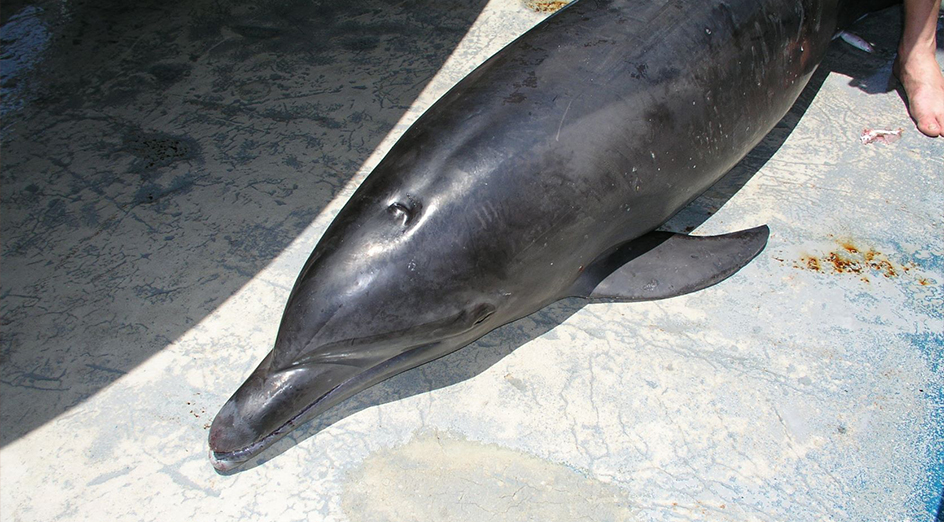A new study by an international team of researchers has shown that past and ongoing levels of dolphin capture in the Pilbara, Western Australia, are not sustainable.
The research found that fishing results in the accidental capture, so-called ‘bycatch’, of non-target species, threatening protected and endangered wildlife.
Adjunct Research Fellow at The University of Western Australia and Senior Lecturer at the University of Bristol, Dr Simon Allen, said bycatch and discarding of marine wildlife in commercial fisheries is a global problem for fisheries management.
 Image: Captured protected dolphin on deck. Credit: Simon Allen
Image: Captured protected dolphin on deck. Credit: Simon Allen
“The Pilbara Fish Trawl Interim Managed Fishery targets emperor, snapper, trevally, cod and grouper, providing catch to domestic markets of Western Australia, including Perth and Shark Bay,” said Dr Allen, who studies dolphin behaviour and interactions with fisheries.
“Like many trawl fisheries, however, this also results in the capture of protected species including dolphins, turtles and sea snakes, as well as a variety of threatened sharks, rays and critically endangered sawfish.
“Bycatch Reduction Devices were placed in the trawl nets in 2006 and there has been some monitoring since, but no quantitative assessment of the impact of fishery-related dolphin mortality was ever carried out.
“We set out to model different levels of dolphin capture, including those reported in fishers’ logbooks and those reported by independent observers. Unfortunately, our results show clearly that even the lowest reported annual dolphin capture rates are not sustainable.”
The study’s lead author, Dr Oliver Manlik, Assistant Professor at the United Arab Emirates University, said the paper introduces a novel approach to assessing human-caused mortality to wildlife that can be applied to management of fisheries bycatch, hunting, lethal control measures or wind turbine collisions.
“When we incorporate ‘stochastic factors’ or chance events, our model showed that current dolphin bycatch is unsustainable,” Dr Manlik said.
“This not only raises concerns for the dolphin population but highlights a problem with other assessments that don’t account for random events, like heatwaves, because these environmental fluctuations are becoming more frequent and intense with climate change.”
The Western Australian Department of Primary Industries and Regional Development is required to publish an Ecological Risk Assessment of the Pilbara Fish Trawl Interim Managed Fishery in 2022, which considers the impacts of the fishery on all target and non-target species, habitats and ecological processes.
Dr Allen said applying the Sustainable Anthropogenic Mortality in Stochastic Environments method suggested in the paper would improve the scientific basis for decision-making about the impacts of the fishery on non-target species.
The researchers, including a co-author from the Species Conservation Toolkit Initiative, intend to make the new method of assessing human impact easily accessible to researchers and wildlife managers worldwide.








